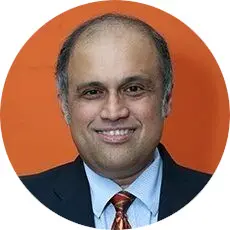
Every year, many high school students must make a life-changing decision: should they pursue a four-year degree at a university? It should not have to be financially stressful and dreadful to be able to pursue higher education, but due to financial constraints, many students are unable to attend their desired school. Higher education comes at a cost, and is a financial burden that can last a lifetime. Many students end their education after a high school diploma because they are overwhelmed by the prospect of paying for college. Higher education is becoming unaffordable and unattainable due to the rising cost of university tuition and living expenses – the cost of attending college can be as high as $80,000 per year for some colleges. With such a high cost, students seek loans after exhausting all other funding options such as scholarships, savings, grants, students’ and parents’ income.
Why is it a problem?
Working while in college can help, but completely avoiding student loan debt with a part-time job is nearly impossible. Because of the rising cost of higher education, it is now impossible to pay for college while working a minimum-wage job. To cover the average cost of attending a public university, a student earning the federal minimum wage would need to work 52 hours per week, which is impossible for most college goers to manage along with studying and academics.
According to a recent NerdWallet study, students who graduate from high school in 2022 and plan to attend a four-year university could end up with up to $40,000 in student loan debt (on average). According to the company, 42% of college graduates will incur student loan debt while attending a four-year university.
The current status of student loans in the US
As of 2022, total student loan debt in the United States totaled $1.75 trillion – federal student loans account for approximately 92% of total student debt, or $1.62 trillion; the remainder is made up of private student loans. Student loan debt affects 43 million federal borrowers and up to 3 million private borrowers. Almost one in every five borrowers was in default prior to the suspension of interest and loan payments in response to the COVID-19 pandemic. 15% of all American adults report that they still have outstanding undergraduate student loan debt, and 7% report that they have outstanding postgraduate student loan debt. Additionally, 96% of overall borrowers with outstanding debt related to their own education owe a balance on a student loan, and 88% of borrowers owe for a child’s or grandchild’s education.
Student loan debt by demographics
According to the Federal Reserve Board of Governors, African American borrowers took out the most federal student loan money in 2019 ($44,880 on average). Furthermore, according to the Education Data Initiative, on average after 4 years, African American student borrowers owe 6% more than they initially borrowed, while Caucasian borrowers owe 10% less than they initially borrowed. After four years, 48% of African American student borrowers and 17% of Caucasian student borrowers owe more than they borrowed. For graduate school, 40% of African American students and 22% of Caucasian students incur debt. Overall educational debt affects 67% of Hispanic and Latino student borrowers. Asian student borrowers are the most likely to have a net worth greater than their student loan debt, and are the most likely to have paid off their student loan debt.
Women owe a disproportionate share of total student loan debt, and are more likely than men to be in debt – women owe 58% of all student loan debt ($929 billion). Female bachelor’s degree holders borrow about 4% more than male bachelor’s degree holders in student loans, and female associate’s degree holders borrow about 25% more in student loans than males.
According to the US Census Bureau, student debt is related to educational attainment. Students with advanced degrees were more likely to have higher student debt, but those with some to no degrees faced a more difficult situation because although they did not accrue as much debt during college, they also did not benefit from the higher earnings that come with a college degree. One in every four adults with a degree higher than a bachelor’s degree had at least some student debt, compared to fewer than one in every five adults with an associate or two-year degree. Those with only a high school diploma had the fewest student loans, but if they began and abandoned a college course or pursued vocational training, they accrued debt. According to the Education Data Initiative, 60.5% of all graduate students have federal student loan debt, and 54.2% have student loan debt from their undergraduate studies. The average federal student loan debt for a student with an associate’s degree as their highest level of education is $20,000 and bachelor’s degree holders owe an average of $32,300 in federal student loans. Of all professional doctorates, 74.5% have debt from federal student loans for graduate school and 73.5% have debt from undergraduate school. Doctors of medicine are the most likely to have student loan debt, with 81.0% having graduate school debt and 80.3% having unpaid undergraduate loans.
The cost of higher education is rising much faster than inflation and has made education unaffordable amounting to increasing numbers of students and families who need to use student loans to finance their education. Student loans makes it possible for more people to attend college with the prospects of achieving higher income. However, a student loan debt crisis has emerged due to this increasing reliance on student loans. Understanding the status of the student loan debt crisis in the US through various demographic lenses is essential to understanding how to better address the problem for both policymakers and the general public, and will help increase the economic well-being of students across the country who are caught in the downward student loan debt spiral. For several, student loans are a sound investment in a college education to lead to higher earnings over time and can be paid off, but for millions of people in the US, it is becoming a lifelong burden and financial struggle with very minimal return.


 Raj Mehta – Financial Education Instructor
Raj Mehta – Financial Education Instructor